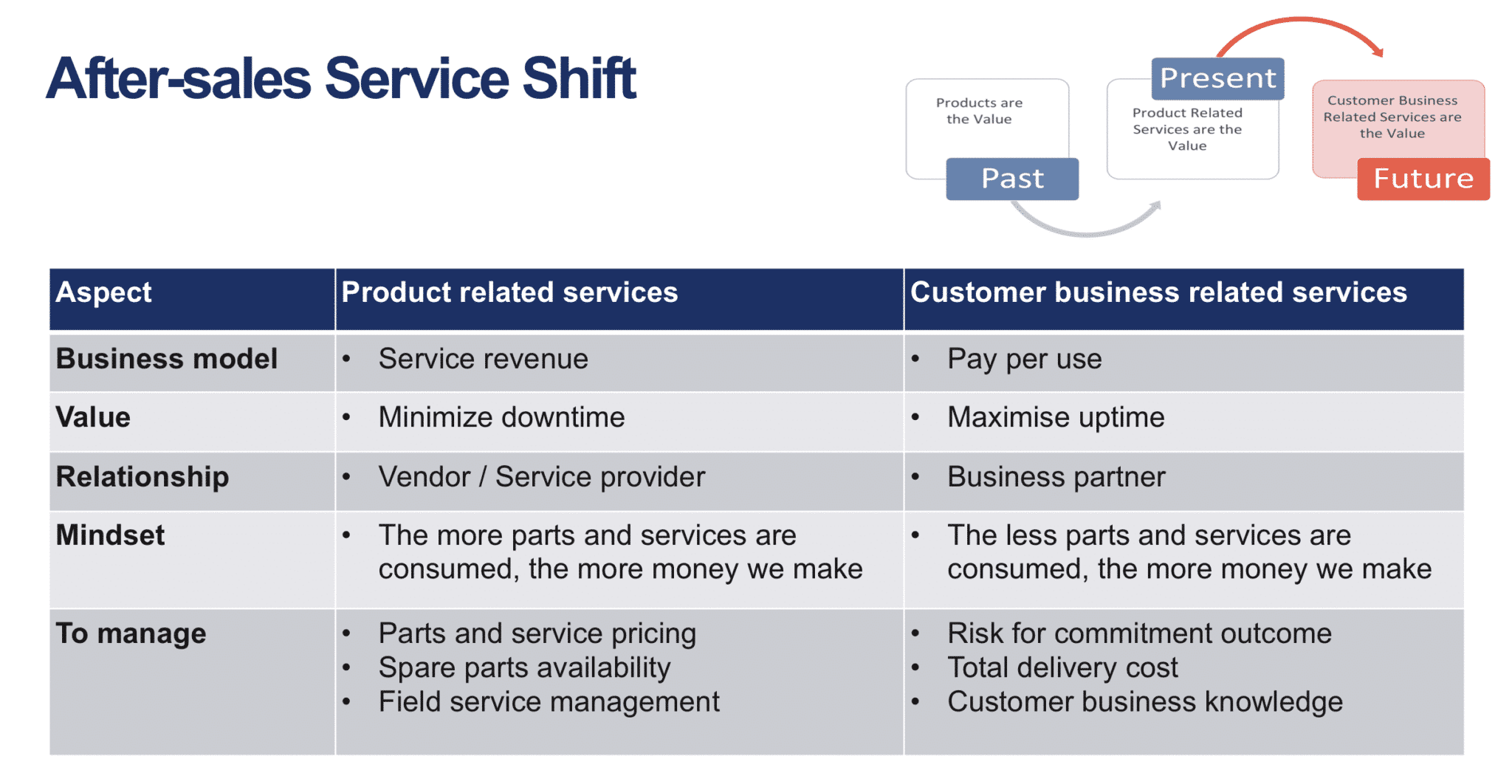
Why servitization?
Servitization, where manufacturers must shift from selling products to selling the output or value that products deliver, is driving manufacturers to evolve their often sub-optimized after-sales service operations from reactive, break-fix models focused on repair execution, to ones focused on maximizing product uptime. That shift is happening for four main reasons:
1. New Generation of Customers
A new generation of customers are expecting to pay for a service, not own a product. Think: no one buys a CD, they subscribe to Spotify. And even in the car industry, people are paying for the use of a car more and more as opposed to outright owning one.
2. Rise of Specialization
Companies are getting more and more specialized. For example, a SaaS-company is better at maximizing the availability of the software than a manufacturer would be. Think: a med-tech company is better than a hospital at maximizing the availability of their equipment.
3. Protection Against Amazon
Protection against independent aftermarket and the Amazons of the world has been a big push for companies to make the shift to servitization. This new approach is a good way for organizations to protect the service revenue on the manufacturing side.
4. Customers Pressuring Manufacturers
Customers are putting pressure on the manufacturers. Up to $20 billion of annual losses related to unplanned downtime are being reported by global manufacturers. There is a demand for improved reliability and availability, all with lower total cost of ownership.

Ultimately, after-sales service trends are changing from past beliefs that products are the value to a state of product-related service becoming the value. And, in the future, customer business related services will be the value. Over the course of the workshop, we discussed servitization readiness, tools and technology and the potential barriers to success. Industry leaders in the workshop answered questions like: What are the initial steps to enable a service business model? What are the technical prerequisites for servitization? What are the barriers among our customers?